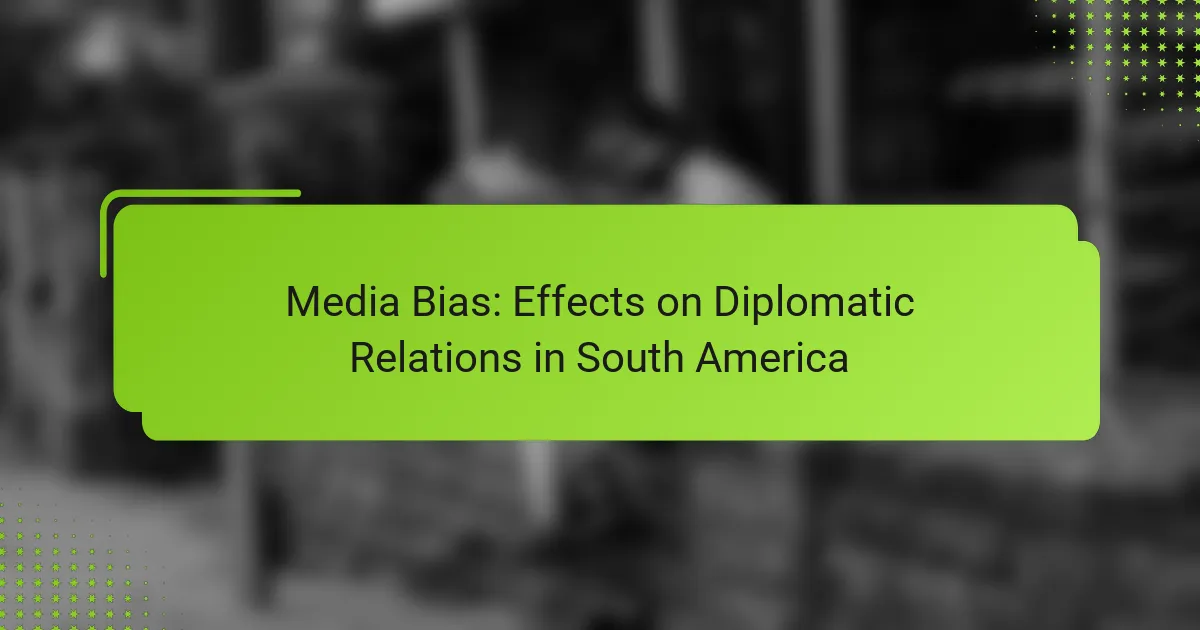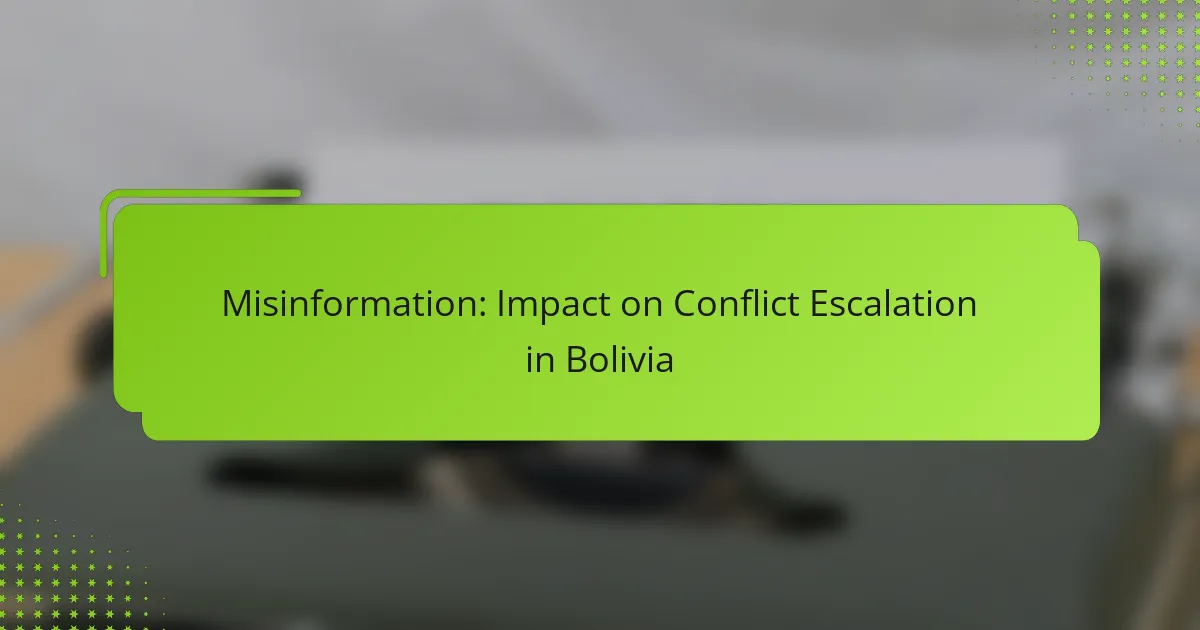Media bias plays a crucial role in shaping diplomatic relations in South America, as it influences both public opinion and governmental actions. Various forms of bias, including political, economic, and cultural, can lead to misunderstandings and increased tensions between nations, ultimately affecting negotiations and cooperation. Addressing these biases through improved media literacy and balanced journalism is essential for fostering healthier international relations in the region.
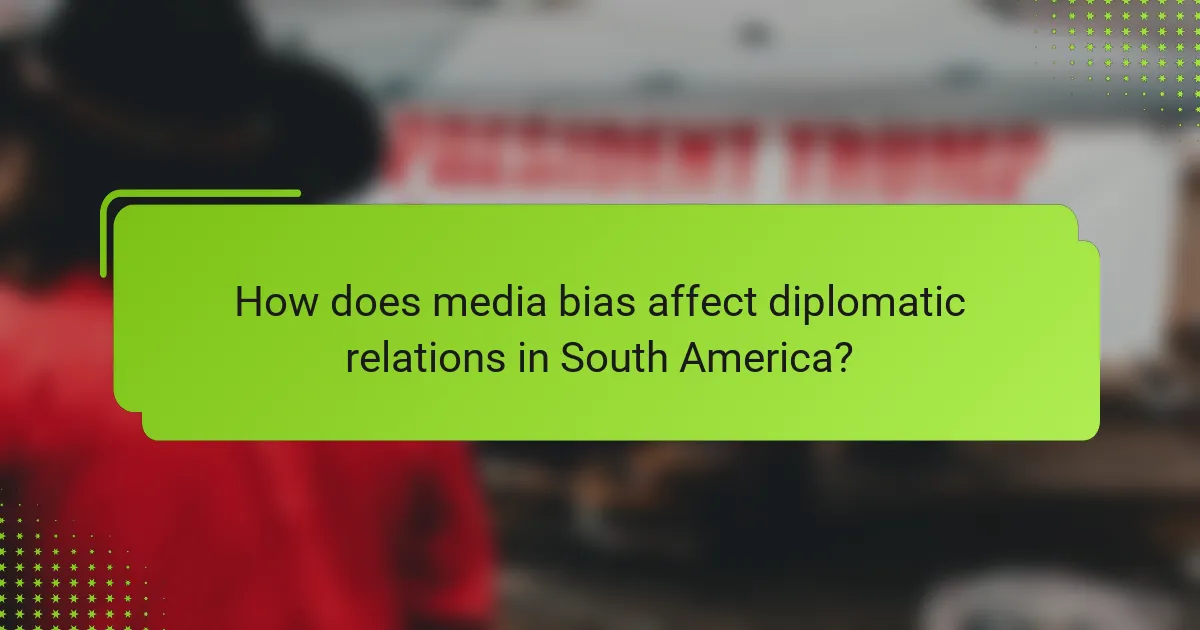
How does media bias affect diplomatic relations in South America?
Media bias significantly influences diplomatic relations in South America by shaping public opinion and government actions. Biased reporting can lead to misunderstandings and tensions between countries, impacting negotiations and cooperation.
Influence on public perception
Media bias plays a crucial role in shaping how citizens perceive foreign nations and their governments. When news outlets present skewed narratives, they can foster negative stereotypes or unwarranted fears, which may lead to public support for hostile policies.
For example, if a country is consistently portrayed as a threat in the media, citizens may demand stronger military responses or sanctions, complicating diplomatic efforts. This perception can create an environment where dialogue is less likely, further entrenching divisions.
Impact on government policies
Governments often respond to public sentiment influenced by media portrayals, which can lead to policy shifts that affect international relations. If media coverage highlights a specific issue, such as human rights violations, governments may feel pressured to take a stand, even if it strains relations with other countries.
Moreover, leaders may use media narratives to justify their foreign policy decisions, which can lead to a cycle of escalating tensions. For instance, a government may adopt a more aggressive stance toward a neighboring country if its media frames the relationship as adversarial.
Case studies of specific countries
In Venezuela, state-controlled media often portrays the United States as an imperialist threat, which has fueled anti-American sentiment among the populace. This bias has led to deteriorating diplomatic relations and increased isolation from Western nations.
Conversely, in Brazil, media bias during election periods has influenced public opinion against neighboring countries, affecting trade agreements and regional cooperation. The portrayal of Argentina during trade negotiations has sometimes led to misunderstandings that hinder collaborative efforts.

What are the main types of media bias observed in South America?
The main types of media bias in South America include political, economic, and cultural bias. These biases can significantly influence public perception and diplomatic relations among countries in the region.
Political bias
Political bias in South American media often reflects the interests of specific political parties or ideologies. This can lead to the portrayal of events and figures in a manner that supports one viewpoint while undermining another, affecting public opinion and voter behavior.
For example, during election seasons, media outlets may favor candidates aligned with their owners’ political beliefs, which can skew coverage and create an unbalanced narrative. This bias can exacerbate tensions between countries, especially when political leaders use media to criticize or undermine their neighbors.
Economic bias
Economic bias arises when media coverage favors certain industries or economic policies over others. In South America, this can manifest in the promotion of free-market policies that benefit large corporations while neglecting the needs of smaller businesses and local communities.
For instance, coverage of trade agreements may highlight benefits for multinational companies while downplaying potential drawbacks for local economies. This can lead to public discontent and strain diplomatic relations, particularly when economic disparities become pronounced.
Cultural bias
Cultural bias in media can shape perceptions of national identity and social issues, often favoring dominant cultural narratives over marginalized voices. In South America, this can result in the underrepresentation of indigenous communities and their perspectives in mainstream media.
Such bias can perpetuate stereotypes and misunderstandings, affecting how countries view each other. For example, if media outlets consistently portray a neighboring country in a negative light, it can foster cultural animosity and hinder cooperative diplomatic efforts.
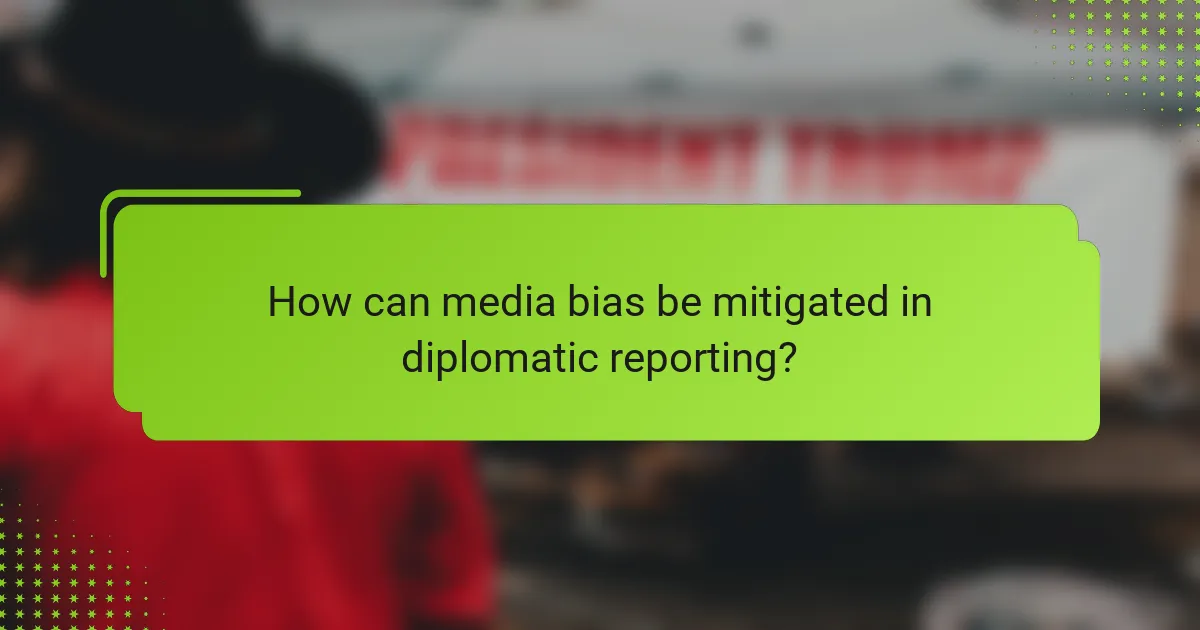
How can media bias be mitigated in diplomatic reporting?
Mitigating media bias in diplomatic reporting involves enhancing media literacy, promoting balanced journalism, and implementing regulatory frameworks. These strategies can help ensure that news coverage is fair, accurate, and contributes positively to international relations.
Promoting media literacy
Promoting media literacy equips the public with the skills to critically evaluate news sources and content. This can be achieved through educational programs that teach individuals how to identify bias, recognize misinformation, and understand the context of news stories.
In South America, initiatives could include workshops in schools and community centers that focus on analyzing news articles and understanding different viewpoints. By fostering a more informed audience, the impact of biased reporting can be reduced.
Encouraging balanced journalism
Encouraging balanced journalism requires media outlets to strive for objectivity and fairness in their reporting. This can involve employing diverse editorial teams that represent various perspectives and ensuring that multiple viewpoints are presented in news stories.
Media organizations in South America can adopt guidelines that emphasize fairness and accuracy, such as fact-checking protocols and transparency in sourcing. This approach not only improves the quality of reporting but also builds trust with audiences.
Implementing regulatory frameworks
Implementing regulatory frameworks can help hold media organizations accountable for biased reporting. Governments and independent bodies can establish standards that require transparency and fairness in news coverage, alongside penalties for violations.
In South America, this could involve creating a media regulatory authority that monitors compliance with established guidelines. Such frameworks can encourage responsible journalism and promote a healthier media landscape that supports diplomatic relations.
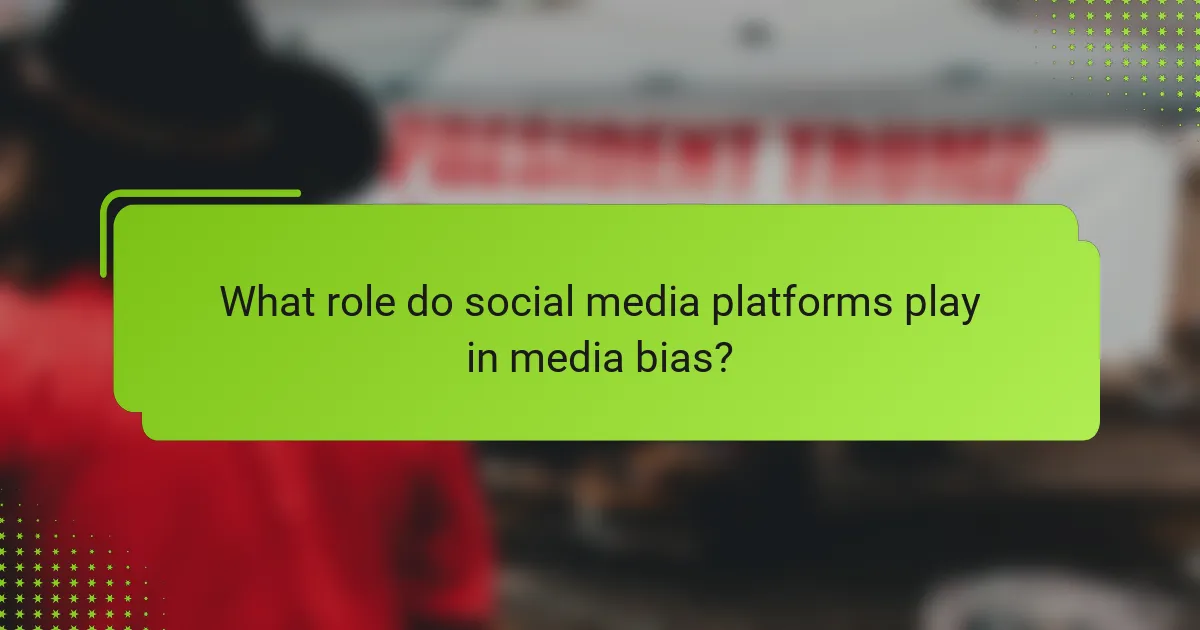
What role do social media platforms play in media bias?
Social media platforms significantly influence media bias by facilitating the rapid spread of information, often amplifying partisan narratives. Their algorithms prioritize engagement, which can lead to the promotion of sensational or biased content over balanced reporting.
Amplification of biased narratives
Social media platforms can amplify biased narratives by favoring content that generates high engagement, such as likes and shares. This often results in echo chambers where users are exposed primarily to viewpoints that reinforce their existing beliefs. For instance, political content that aligns with a user’s preferences may be promoted more heavily, skewing their perception of reality.
In South America, this amplification can exacerbate existing political divides, as users gravitate towards sources that reflect their biases, leading to a fragmented media landscape. The algorithms used by platforms like Facebook and Twitter prioritize sensationalism, which can distort public understanding of key issues.
Influence on public discourse
Social media shapes public discourse by providing a platform for diverse voices, but it can also skew conversations towards polarized viewpoints. The immediacy of social media allows for rapid dissemination of information, but this can lead to misinformation spreading quickly, complicating informed debate.
In South America, this influence is evident during elections or political crises, where social media can serve as a battleground for competing narratives. Users often engage in heated discussions that can overshadow more nuanced perspectives, making it challenging to achieve consensus on critical issues.
Case studies of social media impact
One notable case in South America is the 2018 Brazilian presidential election, where social media played a pivotal role in shaping voter opinions. Misinformation campaigns proliferated on platforms, significantly affecting public perception of candidates and issues.
Another example is the political unrest in Venezuela, where social media has been used both to organize protests and to disseminate government propaganda. These cases illustrate how social media can both empower citizens and distort the political landscape, highlighting the dual-edged nature of its influence on media bias.
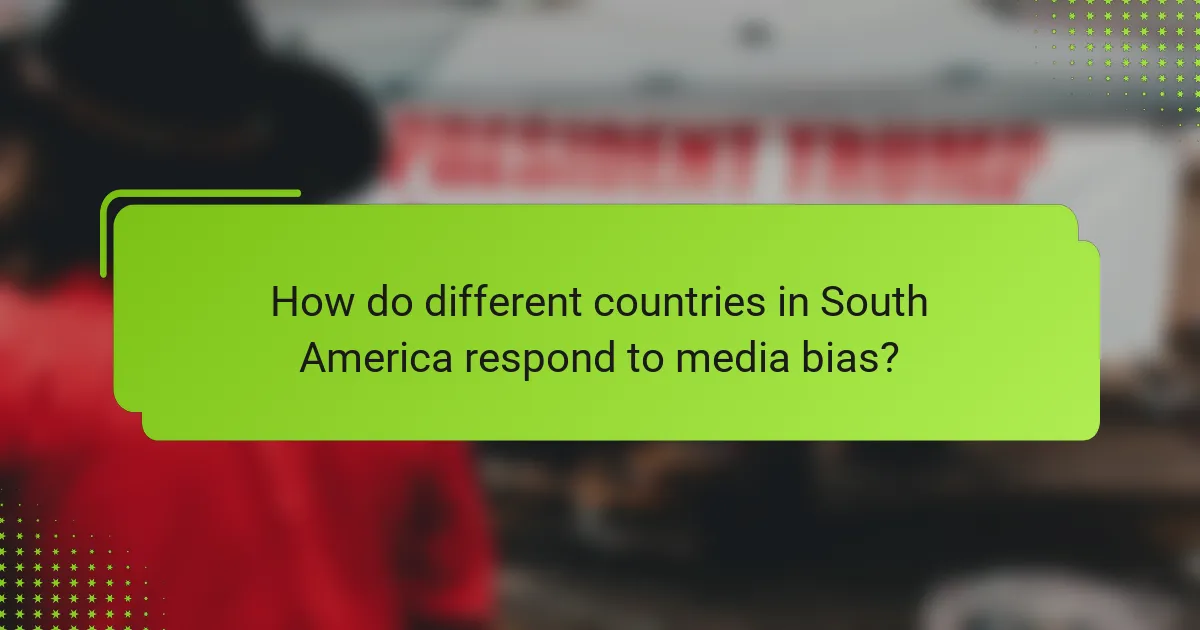
How do different countries in South America respond to media bias?
Countries in South America respond to media bias through various means, including government interventions, public protests, and adjustments in international relations. These responses can significantly influence diplomatic relations and public perception within and outside their borders.
Government interventions
Governments in South America often intervene in media operations to counter perceived bias. This can include regulatory measures, such as enforcing media ownership laws or imposing fines on outlets deemed to spread misinformation. For instance, countries like Venezuela have implemented strict controls over media outlets, which can stifle dissent and shape public narratives.
In contrast, some nations may promote media literacy programs to help citizens critically assess news sources. This proactive approach can empower the public to recognize bias and seek diverse viewpoints, fostering a more informed citizenry.
Public protests and movements
Public protests against media bias are common in South America, reflecting widespread dissatisfaction with how issues are reported. Movements often emerge in response to specific incidents, such as biased coverage of political events or social issues. For example, protests in Brazil have highlighted concerns over media portrayal of marginalized communities.
These movements can galvanize public opinion and pressure governments to take action against biased reporting. Social media plays a crucial role in organizing these protests, allowing citizens to share their experiences and mobilize support quickly.
International relations adjustments
Media bias can lead to shifts in international relations among South American countries. When media outlets portray neighboring nations negatively, it can strain diplomatic ties and foster mistrust. For example, biased reporting on trade agreements or political alliances can complicate negotiations and lead to public backlash.
Countries may respond by adjusting their diplomatic strategies, such as increasing public diplomacy efforts or engaging in regional forums to clarify their positions. Building relationships through cultural exchanges and joint initiatives can also help mitigate the effects of media bias on international perceptions.
